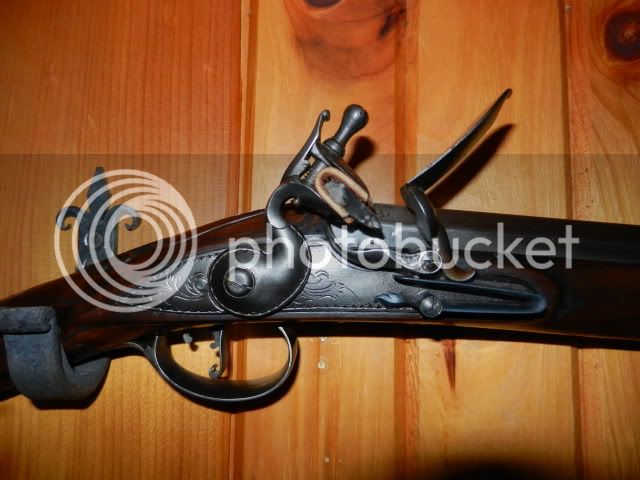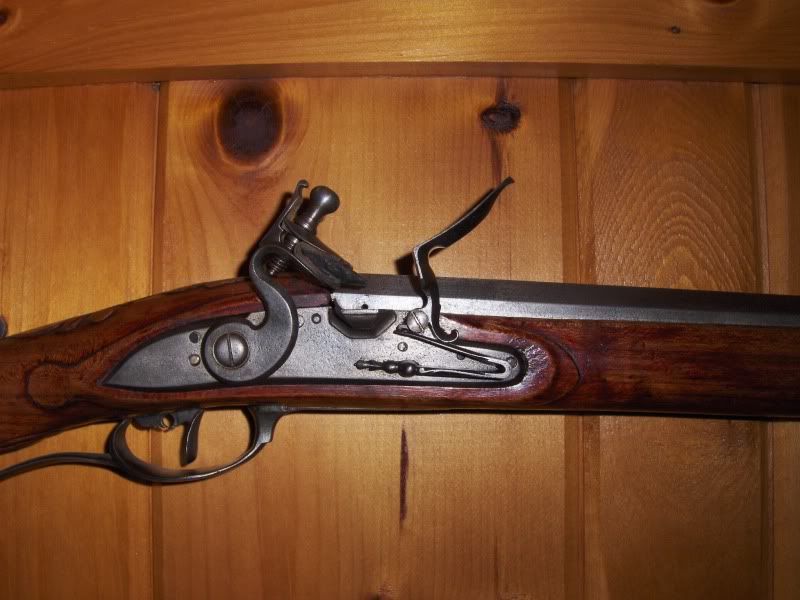Yes, but I didn't want to embarrass our commander by identifying that he was the one using a lead wrap and loosing his flint. He might have improved his standings if he hadn't lost his flint. I had given him a new flint, but I didn't check the wrap.
Very decent of you. Commanders don't like to be embarrassed in front of the troops do they? Hard to argue with experience. I won't be shooting as much probably, who knows. I could catch the bug! I will keep the lead that is on the Charleville for now. I'll check it often to see it stays tight. If I find it is loosening, I will try the leather first flint change or maybe sooner if flints are getting loose, need tightening. I already have the leather pieces. Flints are something I don't want to be losing. Also, what happens if you lose a flint, don't realize it, and fire the piece? Seems like damage to cock or frizzen or both.
BTW, I just tried to take some pictures of my 1766, got one shot, battery is dead! Will try again later. I'm going to measure the springs, trigger pull, and disassemble for cleaning, polishing, and lubrication of the lock. I will also treat the lock parts with Militec-1. I swear by that stuff. Makes bare metal slick as snot. Doesn't draw dust or dirt. You can run a semi-auto pistol dry with it and it will function flawlessly. It also highlights the blue on blued guns, ditto the CCH. I know, sacrilege right? It gets worse. Full disclosure, I use Mobil 1 synthetic grease on internals on my BP revolvers. Run like a Swiss watch. I've been waiting for this blizzard weather to do some of these things. Now we are hunkered down, snowed in (I'm going to have to shovel a 3' drift off the driveway, if it doesn't warm enough to melt in the next few days. Luckily only one spot, most of the snow blew into the next county out here! No need to plow anyway. I'm thankful for that!
How you doing in St. Louis? Ice, snow or like us both?








